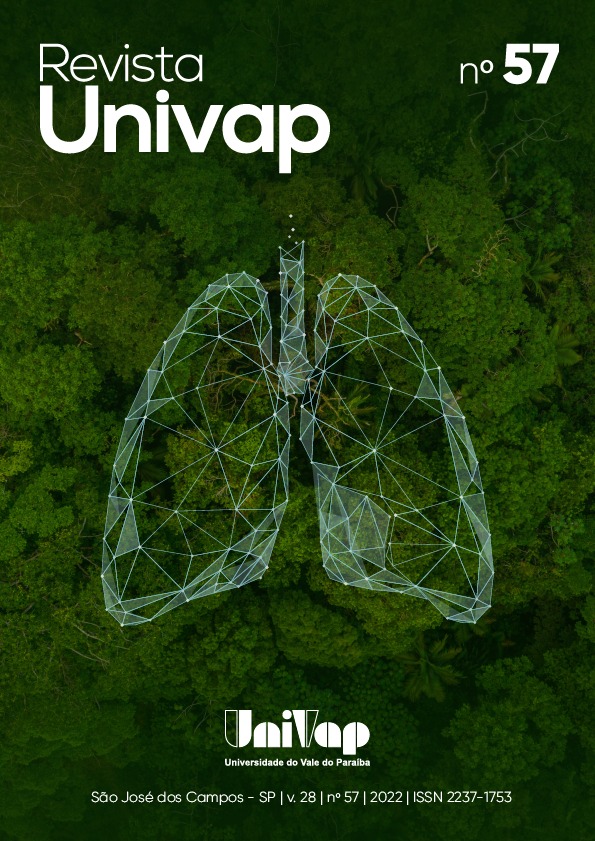ADDITION OF POLYACRYLONITRILE SUPERABSORBENT POLYMER IN CEMENT MIXTURE WITH VARIATION IN THE AMOUNT OF WATER
DOI:
https://doi.org/10.18066/revistaunivap.v28i57.2597Keywords:
Mortar, Superabsorbent polymer, SAP, PolyacrylonitrileAbstract
The superabsorbent polymer is an innovative material with the ability to absorb water and gradually desorb it, and when added to the cementitious mixture, the process of water release occurs slower than usual, since the superabsorbent polymer retains liquid, preventing water evaporation. With the new technologies, the scientific search for the development of new materials in civil construction has been increasing the studies on the application of superabsorbent polymers in the cement mass to improve its properties. In this context, the use of superabsorbent polymers has been analyzed as an internal curing agent of the composite, improving the retraction of the cement mass and increasing mechanical strength, which can be scientifically proven in laboratory tests, such as water reservoir for assistance in mortar hydration. These results contribute to reduce some problems that may occur during mortar's service life, namely cracking and spalling.
Downloads
References
ASSOCIAÇÃO BRASILEIRA DE NORMAS TÉCNICAS. ABNT NBR 16697/2018 – Cimento Portland Requisitos. Rio de Janeiro: ABNT, 2018.
ASSOCIAÇÃO BRASILEIRA DE NORMAS TÉCNICAS. ABNT NBR 7222/2011 – concreto e argamassa – Determinação da resistência á tração por compressão diametral de corpos de prova cilíndricos. Rio de Janeiro: ABNT, 2011.
ASSOCIAÇÃO BRASILEIRA DE NORMAS TÉCNICAS. ABNT NBR 5738/2015 concreto – Procedimento para moldagem e cura de corpos de prova. Rio de Janeiro: ABNT, 2015.
ASSOCIAÇÃO BRASILEIRA DE NORMAS TÉCNICAS. ABNT NBR 7215:1996 Cimento Portland – Determinação da resistência a compressão de copos de prova cilíndricos. Rio de Janeiro: ABNT, 1996.
DANG, J.; et al. Effect of Superabsorbent Polymer on the Properties of Concrete. Polymers, v. 9, n 12, p. 1-17, 2017.
DUGANE, S. et al. Analysis of Effect of Internal Curing with Super Absorbent Polymer Journal of Mechanical and Civil Engineering, v. 16, n. 3, p. 60-62, 2019.
GARCIA, Amauri. Ensaios dos materiais. 2. ed. Rio de Janeiro: LTC, 2013.
HASHOLD, Marianne Tange. Can superabsorent polymers mitigate autogenous shrinkage of internally cured concrete without compromising the strength? Construction and Building Materials, v. 31, n. 2012, p. 226–230, 2012.
LEE, H. X. D; BUENFELD, N. R. Effect of alkalinity and calcium concentration of pore solution on the swelling and ionic exchange of superabsorbent polymers in cement paste. Cement and Concrete Composites, v. 88, p. 150-164, 2018.
MECHTCHERINE, Viktor; REINHARDT, Hans-Wolf. Application of Super Absorbent Polymers (SAP) in Concrete Construction: State-of-the-Art Report Prepared by Technical Committee 225-SAP, 2012.
NASSER, Rachel O. et al. Correlação entre a capacidade de inchamento e as caraterísticas estruturais de polímeros superabsorventes. In: CONGRESSO BRASILEIRO DE POLÍMEROS, 9, 2007. Anais..., São Carlos, 2007.
ROSA, Fatima et al. Polímeros Superabsorventes potencialidades e aplicações. Dossier Comunicações Química. Disponível em: http://web.tecnico.ulisboa.pt/~mcasquilho/compute/_fitting/Ing98-DC_Quim8.pdf. Acesso em: 12 ago. 2020.
SANTOS, Jefferson et al. Obtenção de compósitos híbridos baseados em hidrogéis e cimento Portland. Química Nova, v. 39, n. 2, p. 124-129, 2016
SNOECK, D. et al. The effects of superabsorbent polymers on the microstructure of cementitious materials studied by means of sorption experiments. Cement and Concrete Research, v. 77, p. 26-35, 2015.
Downloads
Published
How to Cite
Issue
Section
License

This work is licensed under a Creative Commons Attribution 4.0 International.
This license allows others to distribute, remix, tweak, and build upon your work, even commercially, as long as they credit you for the original creation.
http://creativecommons.org/licenses/by/4.0/legalcode


